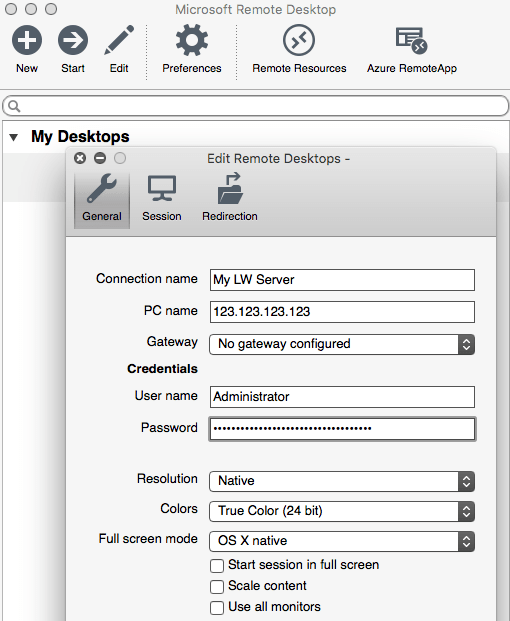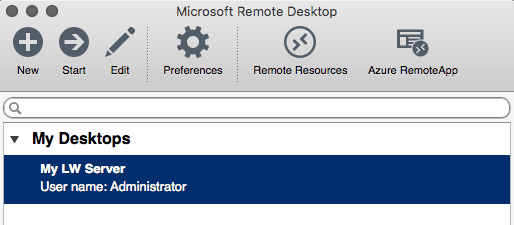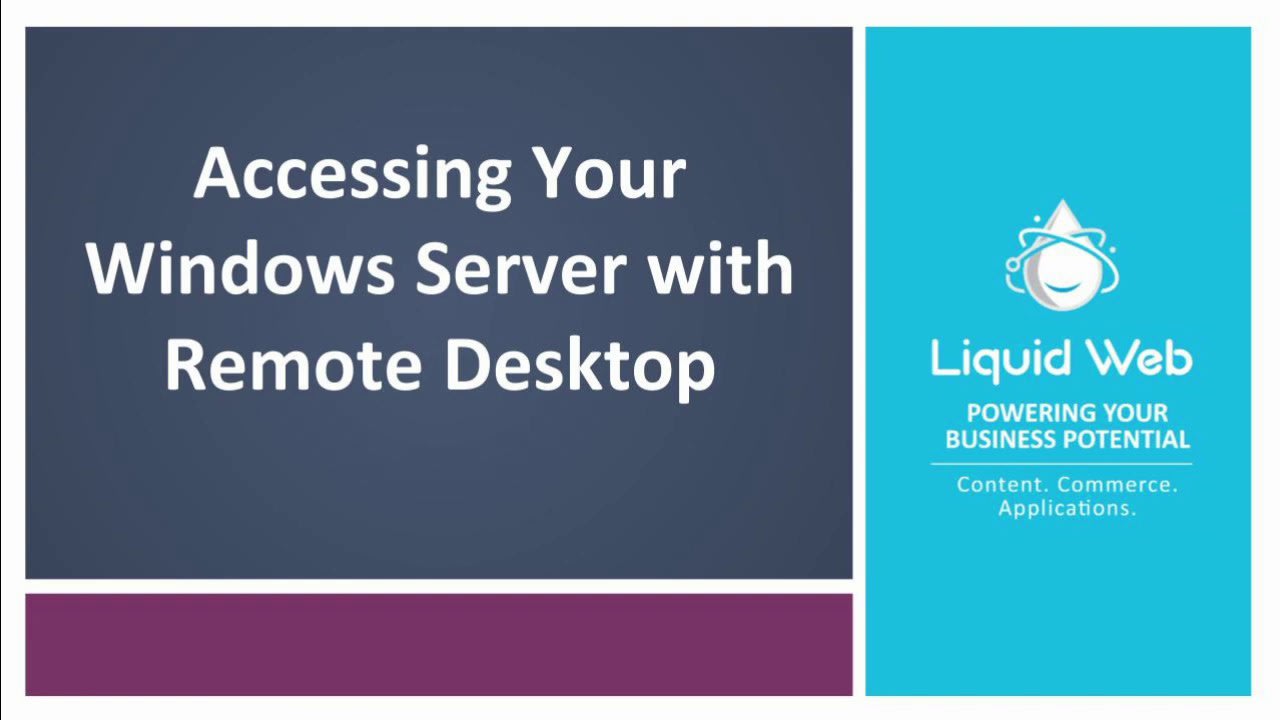How to Access Your Windows Server Using Remote Desktop
In this article, we explain how to use Remote Desktop software to access your Windows server’s desktop from anywhere in the world. On a normal Windows computer, you have a keyboard, monitor, and mouse that allow you to interact with the machine. For Windows VPS servers hosted on the Internet, things are a bit different because your server could physically be thousands of miles away. To access the desktop of an Internet-hosted server, Microsoft has created a feature known as Remote Desktop.
For VPS servers hosted and accessible to the Internet, things are a lot different now than they were years ago because servers can now literally be thousands of miles away. To access the desktop of an Internet-hosted Windows server, Microsoft offers a feature known as Remote Desktop.
Supported Operating Systems
All of Liquid Web’s Windows VPS servers are capable of accepting Remote Desktop connections. However, not all client computers can utilize it. Here is a list of operating systems known to be capable of communicating with your Windows server with Remote Desktop:
- Microsoft Windows 2000 Clients and Servers
- Microsoft Windows 2003 Server
- Microsoft Windows 2008 Server
- Microsoft Windows 7 and later
- Linux with the RDesktop application installed
- Mac OS X with a Remote Desktop client:
- (Mac OS X versions 10.9 and later: Microsoft Remote Desktop)
- (Mac OS X versions 10.5-10.8 only: Open Source CoRD Client)
- (Mac OS X versions prior to 10.7: Microsoft Remote Desktop Connection Client for Mac)
Remote Desktop to Your Server From a Local Windows Computer
Here are the directions to remote desktop into your server from a local windows OS
- Click the Start button.
- Click Run...
- Type “mstsc” and press the Enter key.
- Next to Computer: type in the IP address of your server
- Click Connect.
- If all goes well, you will see the Windows login prompt.
Remote Desktop to Your Server From a Linux Computer with RDesktop
- Open a command shell using xterm
- Type ‘rdesktop‘ at the command prompt to see if you have rdesktop installed
- If rdesktop is installed, then proceed. Otherwise, you will need to install the rdesktop package for your flavor of Linux.
- Type ‘rdesktop‘ followed by your server’s IP address. Then press Enter.
rdesktop 72.52.246.40 - If all goes well, you will see the Windows login prompt.
Remote Desktop From Mac OS X
Using Microsoft Remote Desktop (Mac OS X versions 10.9 and later)
Step1.
Install Microsoft Remote Desktop from the Mac App Store.
Step 2.
Next, click the New button or use the shortcut Command + N to set up a connection to your server.
Step 3.
Fill in the appropriate settings, then close the Edit Remote Desktops window.
- PC name: You can use your server's IP address or its hostname (if the hostname has an appropriate DNS record and resolves).
- Username: To access the admin account, use “Administrator”.
- Password: Enter the Administrator password.
- Configure any other preference settings.

Step 4.
Select your connection under My Desktops and press the Start button in the menu to connect (or simply press the return key on your keyboard).

Step 5.
If your server uses a self-signed SSL certificate, a message will be displayed as Remote Desktop is negotiating credentials. You can either press Continue to proceed with the connection or, to permanently store the certificate and connect directly in the future. To accomplish this, click Show Certificate and then check the box next to Always trust ... before clicking Continue to proceed.
Using CoRD (Mac OS X versions 10.5 through 10.8 only):
Step 1.
Download and install the CoRD application to your Mac.
Step 2.
Open the application and click on the File menu, then New Server. You will be presented with a window where you can specify information about the server you are connecting to.
Step 3.
Enter the server's hostname or IP address in the Address field. You can alter the other settings in this window if you wish but all you need to start the connection is the address.
Step 4.
When you are finished making changes, press the enter/return key on your keyboard or simply close the new server window.
Step 5.
Your new server profile will appear in the list to the left side of the application. Double-click on it, and start the connection to your server.
Using the Microsoft RDP Tool (Mac OS X versions before 10.7 only)
Step 1.
Download and install the Microsoft Remote Desktop Connection Client for Mac.
Step 2.
When you open the application, you will be prompted for the “Computer:” you would like to connect to. You can enter the server's hostname or IP address.
Step 3.
After you click Connect the client will ask for your username and password. If it fails to connect, you can try again inside the remote connection window.
Subscribe NOW!
Not getting the support you need? Liquid Web’s servers outmatch the competition daily on performance, stability, and support. We can migrate your data over to our environment for free. Check out how the difference in quality today!
Related Articles:

About the Author: Dan Silva
I am a musician, an amateur cook, a gamer and a technology lover. After a few years of studying for a primary education teacher I realized that I liked computers better. Thus, I've been working as a professional Linux support tech for a bit over two years now and really liking it. Lately, I've been spending most of my free time behind the screen playing Ori, The Will of the Wisps, and learning Python. I would recommend both!
Our Sales and Support teams are available 24 hours by phone or e-mail to assist.
Latest Articles
How to use kill commands in Linux
Read ArticleChange cPanel password from WebHost Manager (WHM)
Read ArticleChange cPanel password from WebHost Manager (WHM)
Read ArticleChange cPanel password from WebHost Manager (WHM)
Read ArticleChange the root password in WebHost Manager (WHM)
Read Article



